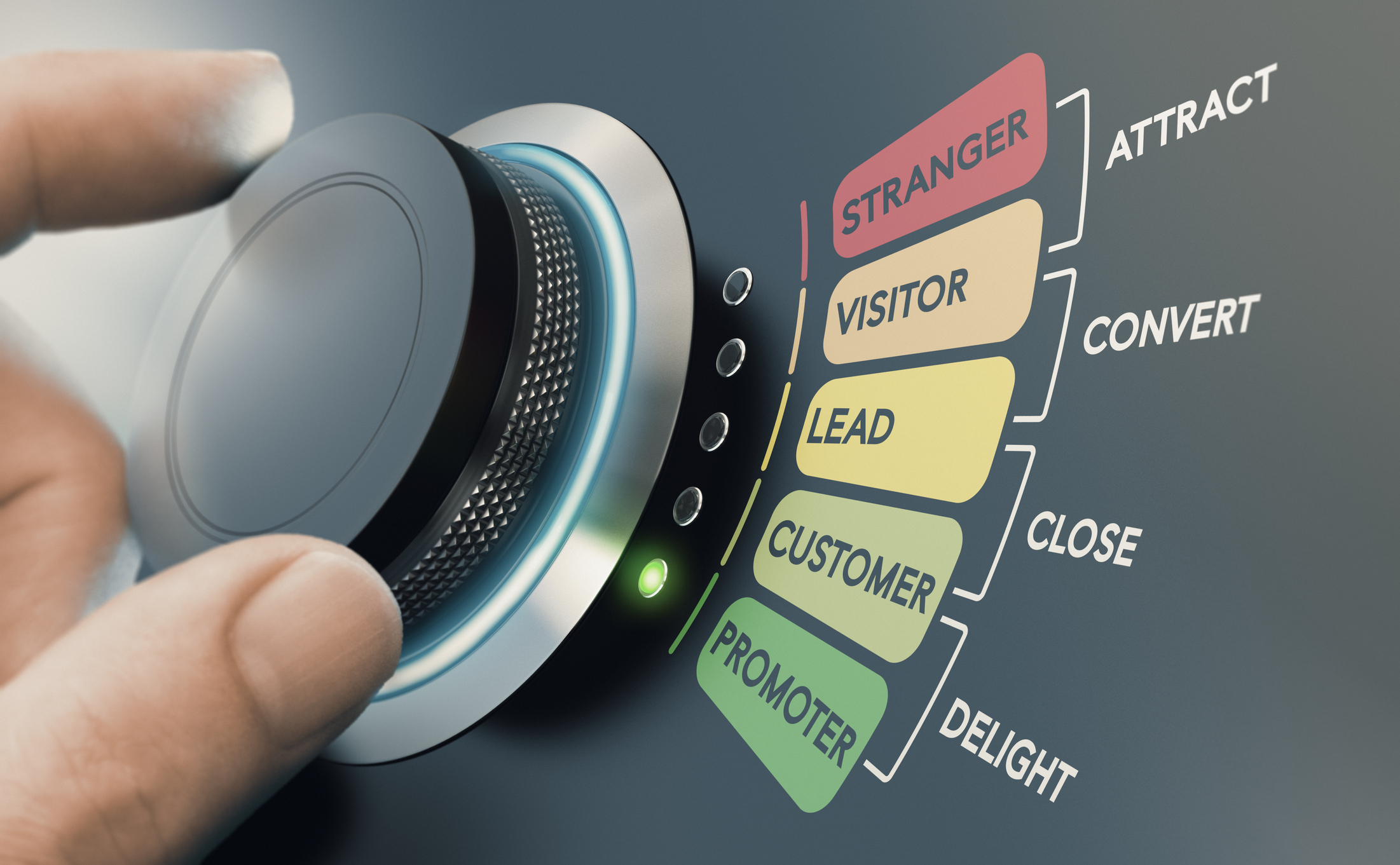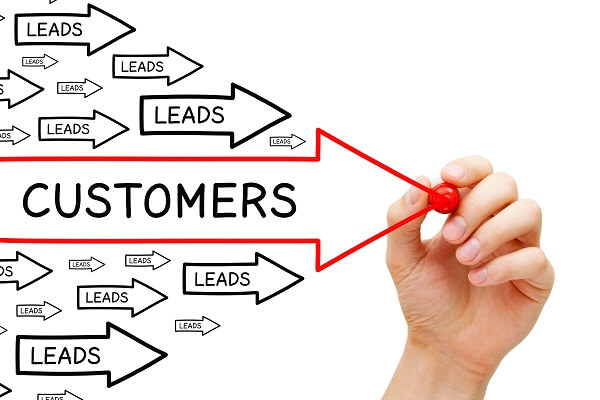The Art of Following Up
Learn how to successfully follow up with prospective homeowners in the home service industry. Discover effective techniques and strategies to convert leads into loyal customers.

Following up on leads is a must for any business that wants to increase conversions and revenue. But converting potential customers into actual customers takes some work.
While you might be tempted to push your sales team to knuckle down and grind out that work, it's important to remember there's an art to following up. Call too many times too quickly and you alienate the prospect. Stretch the time between follow-ups too long and potential customers forget about your services or think you don't really care that much.
Keep reading below to find out more about the benefits of following up in home service business and get some tips on how to follow up effectively.
CraftJack helps you build your business by connecting with qualified leads who are interested in residential and commercial contractor services. Learn how it works now.
The Importance of Following Up in Home Service Businesses
At its simplest, following up is just asking how something went. It's an act that shows you care about the customer experience.
Consider an example to understand how important that perception of care is. Imagine you get your hair cut. However, the person cutting it doesn't offer you a mirror or ask whether the haircut is what you asked for. They just take your money and see you out.
Chances are you won't get your hair cut at that establishment again. Even if the haircut is perfect, the lack of care shown for your needs and preferences probably leaves a bad taste in your mouth.
That's the case with every customer interaction — even in the sales funnel.
The Benefits of Following Up
Aside from demonstrating that you care about your customers — even the ones who haven't passed all the way through your sales funnel yet — following up has other benefits.
- Consumers expect excellent communication and organization, and following up can demonstrate that.
- It ensures the consumer feels valued, which can prompt them to choose your business for their needs.
- It fosters trust, which increases your chances of closing the deal.
- It helps you reestablish and nurture old leads that have gone cold.
- Consumers who trust you are more likely to invest in upgrades or long-term service packages.
- Strong follow-up can create an advantage over competition that isn't engaging in this process.
Establishing a Follow-Up Plan
Make sure you establish a follow-up plan that sales professionals and others can follow. Make it simple and easy to use; otherwise, people will avoid it. Any system that involves tedious clicking or unnecessary data entry, for example, is automatically less effective than a streamlined option.
Consider designing a 3-step or 4-step system. Common steps you might include are maintaining a follow-up list, choosing a lead, attempting contact, recording the results of the attempt, and setting a date for the next follow-up attempt if necessary.
Next, you need to set a schedule. You can leverage best practices pioneered by others but remember to keep the needs of your business and sales team in mind. For example, networking expert Ivan Misner recommends a 3-step follow-up system known as the 24/7/30 system:
- Follow up with an email or message within 24 hours of first contact.
- Follow up again in 7 days via a different method, such as a phone call.
- Follow up again in 30 days with an invite to set up a meeting.
However, if you're in an aggressive sector or know that homeowners make decisions on relevant service in less than a month, you may want to set more aggressive follow-up timelines.
Automate these processes wherever you can. Use customer relationship management software, or CRM software, to keep track of follow-up needs. For example, it's important to follow up on timelines set by potential customers when possible. If salespeople can set reminders to follow up with leads and get a notification or list of leads on the right day, it reduces the chance a potential customer will fall through the cracks.
Techniques for Successful Follow-Up
Once you have a system in place to schedule and manage follow-ups, take time to ensure the follow-up work performed is effective. Hold sales training and talk about effective techniques for following up with leads. You can start with some of the tips below.
Revisiting Old Leads
Persistence is, perhaps, the most important quality when following up. Around 80% of people say no at least four times before they commit to a purchase, and the bigger or more complex a purchase is, the truer that may be. But more than 90% of salespeople give up after the fourth call.
Almost half of salespeople give up after the first call. If your team is willing to persist when consumers aren't ready to make a purchase decision, your home service company may find it's the last option standing when the homeowner is ready to say yes.
Here are some ways you can revisit old leads without feeling like you're pestering homeowners:
- Keep up with relevant news. You can reach out to offer helpful information to the homeowner. For example, if there's a new tax credit for certain types of home installations, that might impact someone's decision.
- Follow up on something specific. If the homeowner mentioned a specific product and it's going on sale or about to be discontinued, you can follow up to let them know.
- Use seasonal protocols. Reach out to say "Happy Holidays" or ask if the homeowner wants to take advantage of warm summer weather for an exterior installation.

Cold-Calling Strategies
Cold calling can be a daunting task for even seasoned sales professionals. Use the tips below to improve cold-calling performance.
Start by ensuring you're reaching out to the right person. For home service businesses, this means calling someone who owns their property and may be able to make a decision about your services. Most of the time, renters can't make these decisions, so ensure your leads are qualified and don't include the wrong target audience.
Prepare ahead of time for calls. Do some practice with coworkers or family members if you've never handled this type of call before. You want to sound confident and in-the-know when you talk to leads. Have important facts about your services or products in front of you in case the person asks questions.
Don't ask and answer questions like a robot. Take time to build rapport and start a relationship with prospects. Listen to their challenges or concerns and respond professionally but conversationally. Share your own insights and experiences where appropriate to humanize the connection.
Selling Homeowners on Your Company & Services
Once you make the initial connection with potential consumers, you'll need to make a sales pitch. Always include your unique selling proposition, or USP. This is what makes your products or service different from competitors and a top reason consumers may want to choose you.
While your USP remains the same across all sales pitches, don't forget to customize your approach as needed. Consider the needs of the potential customer as well as factors like budget and general preferences. Pitching luxury window installation to a budget-conscious patio homeowner may not work, for example.
Leverage social proof to back up any claims you're making. Share customer testimonials and reviews and invite homeowners to research your product and brand. You can do this when following up via email by including links or embedding reviews right in the email.
Answering Homeowner Questions
When you can become a resource for a homeowner, you increase the chances they'll follow up with you and not your competitors.
Always address common concerns and objections when speaking to people on the phone. Follow up on calls by providing detailed information via email or physical mail. You might provide brochures, manuals, or links to more information on your website.
Offer expert advice and guidance to help prospects make informed decisions. For example, an HVAC company can provide recommendations about which new HVAC units would meet the customers’ needs and fit within their budgets.
Thanking Satisfied Customers
Follow-ups aren't just for leads and prospective customers. Follow up with your existing customers, too. Reach out via email, phone or mail to thank them. You can also use this as an opportunity to ask for feedback or request that they leave a review to help support your business.
Take extra time to show appreciation to loyal customers. Consider sending out birthday greetings via email or mail and following up with them around important holidays or other times of year. For example, plumbers might reach out to loyal customers prior to winter to remind them to winterize their plumbing.
The Bottom Line on Following Up
Strong follow-up is critical to success for home service businesses. To follow up well, you need a plan, a system and buy-in from your staff.
To keep sales staff motivated, offer positive feedback often and remind sales staff that it takes four or more touchpoints before most consumers are ready to shake hands or sign on the dotted line. They'll have more success if they see multiple follow-ups as part of the normal process rather than potential failures.
Frequently asked Questions about Following Up
How often Should I Follow Up with Prospective Customers?
You should follow up with prospective customers at a frequency and timeline that makes sense for your products, business, and audience. Once a week may be good for some businesses. Multiple times a day is probably never the right choice. Test various follow-up strategies to see what works for your business.
What is the Best Way to Follow Up with Customers Who are Not Ready to Buy?
Customers who are in the decision-gathering stage probably don't want to deal with phone calls. Consider following up via email by sending them helpful information such as buying guides.
How can I Improve my Cold-Calling Success Rate?
One of the best ways to improve cold-call success is to ensure you're speaking to the right person. Take time to learn the name and contact information for the people who make decisions if you're trying to convert commercial customers. If you're working with homeowners, try to get a feel immediately for whether one person in the household makes these decisions or several. Either way, try to talk to the people who can say yes.
What should I Include in My Sales Pitch to Potential Customers?
Your sales pitch should make it easy for the customer to understand what you can do for them. Keep your unique value proposition front-and-center and avoid getting into nitty-gritty details like options and pricing right away. You can present details once the customer has shown interest and moved farther into the funnel.
How can I use Customer Feedback and Reviews to Improve my Follow-Up Process?
Look for constructive criticism and praise about your sales processes and follow-ups in customer reviews and feedback forms. Make a list of what seems to work for customers so you can do more of it. When customers have an issue with your process, try to figure out what went wrong and how you can improve it for the future.
Find out more about how CraftJack works, sign up for qualified leads in your area, and discover the most cost-efficient way to grow your business.



